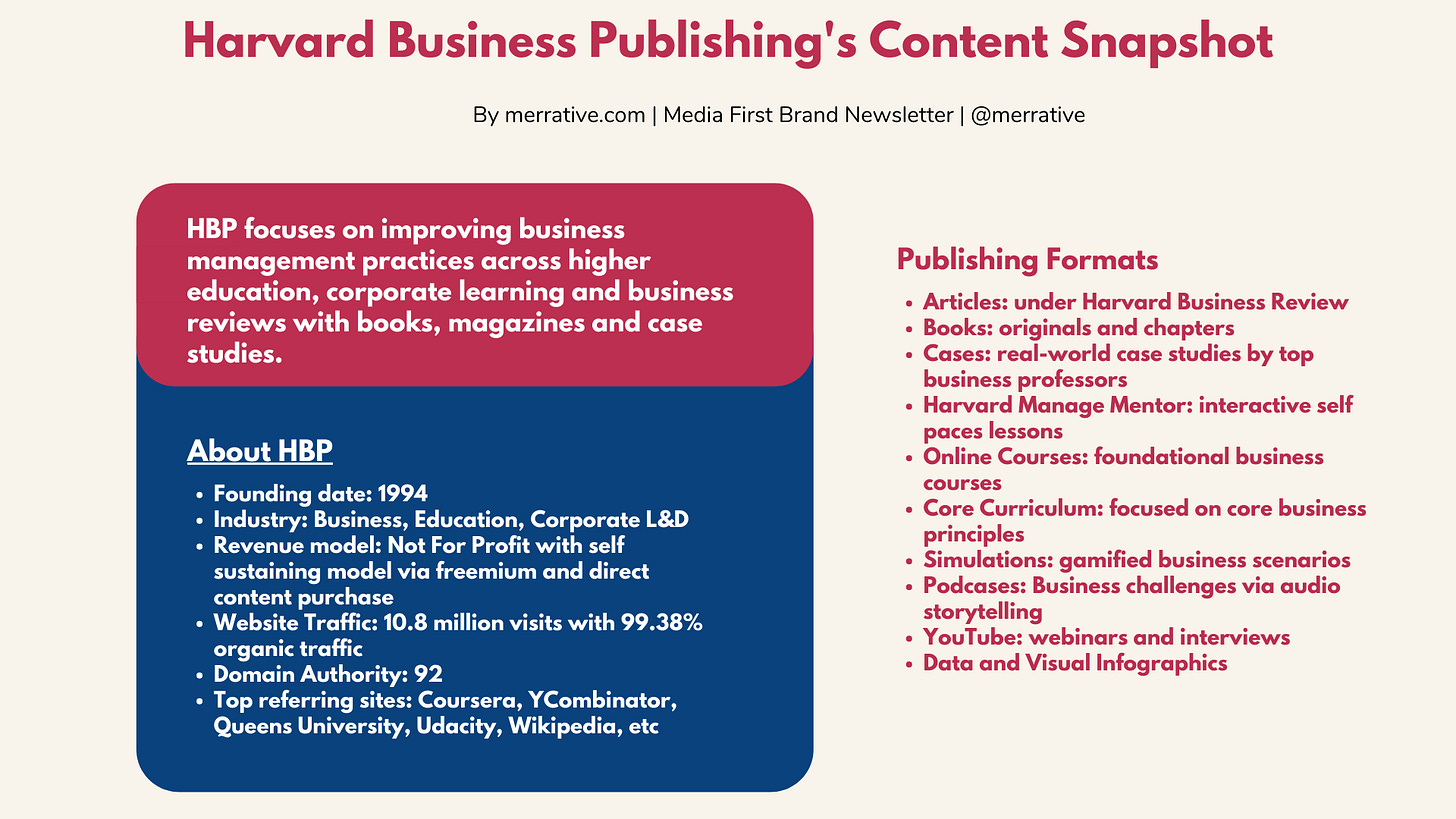Harvard University's Content Marketing Strategy to become a media first brand with Harvard Business Publishing
Case Study-2 for Media First Brand
👋 Hello, I’m Harshala, and welcome to the 🔒 limited access edition 🔒 of Media First Brand. This post has free reading access for 2 weeks from the publishing date, after which it gets archived. On-demand access to archived posts requires a paid subscription.
Each month, I share 2 limited editions and 1 free post:
1 detailed content marketing strategy case study of any brand
1 unique example of a content format, copy, or content campaign that caught my attention.
1 Free post at month end that summarizes the best content published across Merrative’s media assets and reports their growth numbers.
To the 14 new readers who have joined our Merrative community, welcome! You’ve joined 103 others who are receiving case studies on how creators and companies are building Media First Brands.
Please move this email from ‘Promotions/Social’ to ‘Primary’ so you don’t miss it!
If you enjoy this newsletter, do help us grow by sharing it with the world :)
Harvard Business School (HBS), under Harvard University in Boston, is among the consistently top-ranked business school in the world. As a part of its legacy, it also owns Harvard Business Publishing (HBP), a well-reputed publication that has elevated HBS into more than just an MBA school - a respected media brand that publishes thought leadership articles, business books, case studies, and houses the respected Harvard Business Review.
But why does a university need a publishing arm?
As per its annual report-2019, HBP alone had a record revenue of $262 million! If it were a for-profit company, it would have been valued at $1.2 Billion.
But apart from being a cash cow with its revenue contribution second to the main business school tuition fees, it also helps them build authority across other universities and reputation among the Business class across the world - using content.
HBR was founded in 1922, while Harvard Business Publishing was founded in 1994 to incorporate HBR and expand by publishing in other formats.
Let’s explore HBP’s content marketing and publishing strategy and understand how it has contributed to building Harvard University’s unparalleled legacy.
What ideas does HBP sell?
“I think [the magazine’s] most important role, more and more, is to be a kind of a conscience for business.”
- David Ewing, managing editor at HBR
HBP primarily wants to sell the idea of ‘improving the practice of Management and its impact in a changing world’. It aims to do so using smart thinking and courageous leadership to solve the world’s toughest management challenges.
It is committed to:
excellence in management education
developing leaders who foster and leverage diversity
create the best learning experience through various content formats
Keep reading with a 7-day free trial
Subscribe to Media First Brand to keep reading this post and get 7 days of free access to the full post archives.





